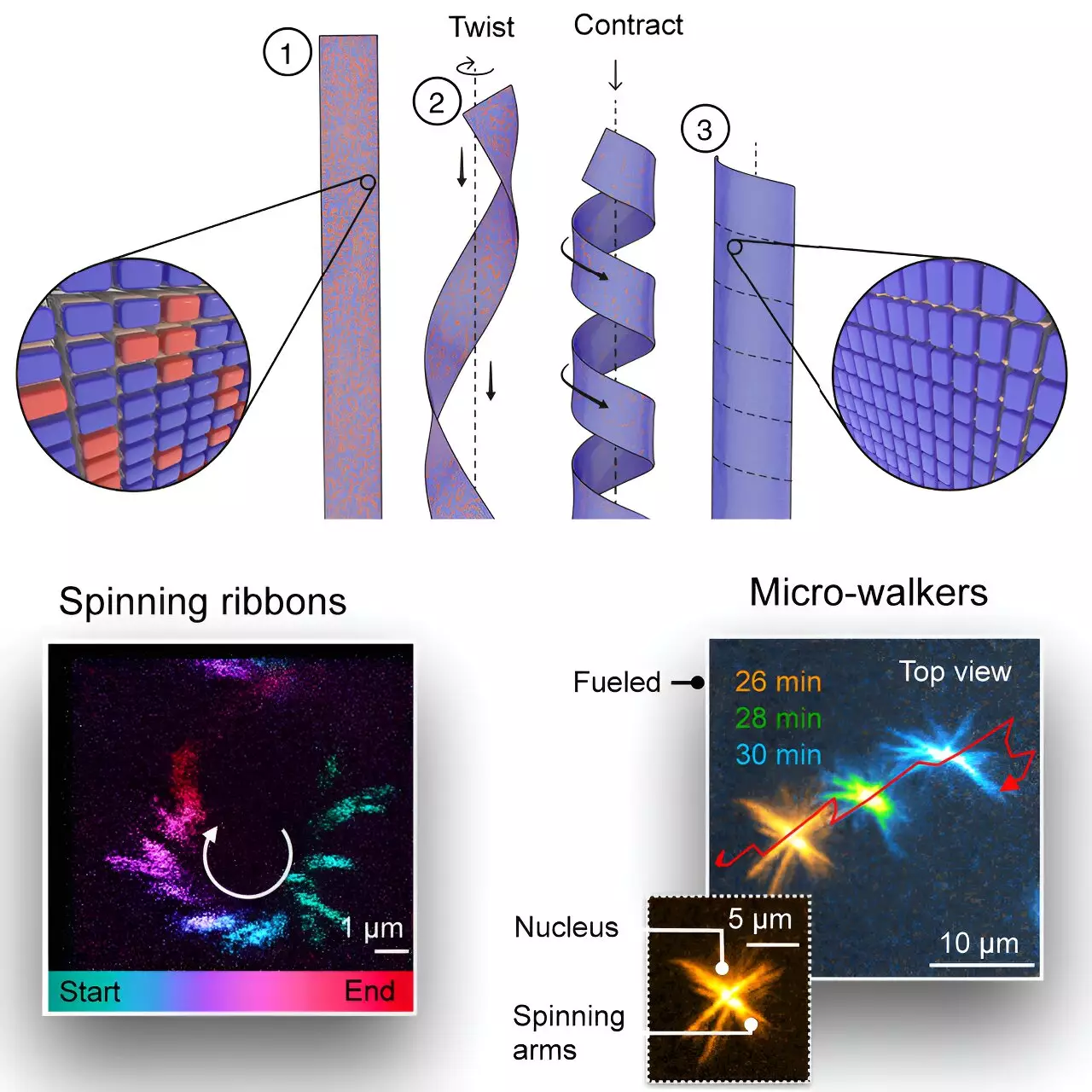Recent advancements from the Technical University of Munich (TUM) have led to the creation of groundbreaking artificial motors that operate at the supramolecular level. This innovation, spearheaded by a research team led by Brigitte and Christine Kriebisch and Professor Job Boekhoven, showcases a minuscule ribbon composed of specialized molecules. As energy is supplied, this ribbon dynamically aligns and propels itself akin to a miniature fin, enabling it to exert force on surrounding objects. This exciting development marks a significant milestone in the conversion of chemical energy into mechanical movement at the molecular level, a feat historically restricted to biological systems.
The inspiration for such a motor is rooted in nature, specifically in the movement of archaea—primitive bacteria that utilize adenosine triphosphate (ATP) as a fuel source to facilitate motion via their flagella. Until now, replicating this biological mechanism synthetically has proven elusive, hindering advances in nanotechnology applications. However, with the introduction of this synthetic motor, capable of harnessing chemical energy to achieve intricate movements, researchers are on the brink of bridging the gap between biology and artificial systems.
The unique construction of these peptide ribbons, which measure mere micrometers in length and nanometers in width, is pivotal to their functionality. Upon the introduction of chemical fuel, these ribbons undergo a structural transformation, curling into tiny tubes and initiating rotational motion. Astonishingly, this entire process is observable under a microscope, offering a rare glimpse into the behavior of such small-scale machines. The researchers have also demonstrated that the rotation speed and direction—whether clockwise or counterclockwise—can be meticulously controlled by adjusting the fuel quantity and tailoring the molecular building blocks that comprise the ribbons.
The implications of this research extend well beyond academic curiosity; practical applications are on the horizon. Collaborating with Professor Matthias Rief, an expert in molecular biophysics, the team has confirmed that these rotating ribbons can exert sufficient force on their environment to manipulate micrometer-scale objects. The prospect of assembling multiple ribbons into a collective formation could result in the creation of small “micro-walkers.” These entities could potentially navigate surfaces, representing a leap forward in concepts of autonomous movement at the molecular scale.
Despite the promising nature of this research, there remain challenges to overcome before real-world applications can be realized. For instance, the chemical fuel currently employed is not biocompatible, rendering it unsuitable for medical applications within living organisms. Future studies will need to focus on developing safe alternatives that could facilitate the use of these micro-walkers in drug delivery systems, making them instrumental in cancer treatment and other therapeutic avenues.
The creation of artificial supramolecular motors by TUM researchers is a landmark achievement that not only mirrors natural processes but also paves the way for transformative applications in medical science. As research progresses, the integration of these innovative motors into practical scenarios holds the potential to revolutionize various fields, significantly altering our approach to nanotechnology and biomedical solutions.


Leave a Reply